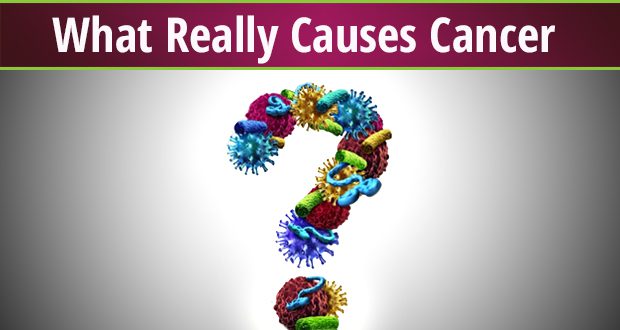In films, nowadays, cancer is most famous for killing off the lead characters. Its use is extensive owing to its exotic, elite and esoteric sound and presence. However, the real victims know that cancer is more than what is glamorously portrayed in films. “You-know-what” is a representative of death, pain, and sorrow. This article takes a rundown on cancer and its enigmatic causes.
Also Read: Liquid Biospy to Improve Cancer Diagnosis & Prognosis
Introducing: Cancer
Cancer is not one, but a system of diseases that can start in any part of the body. Despite setting off on different locations, one deceptively simple reason interlinks all cancers. Cells in our bodies have a set task of dividing cells and dying in the process, in an orderly fashion. When they die out of damage, new cells replace them. This is tightly regulated by the DNA. In the early stages of human life cells rapidly divide. As the individual ages, this division takes place only in order to replace the worn-out or dying cells.
But sometimes, the cells don’t complete the cycle of dying. The cells continue to grow out of control, and crowd out normal cells. Thus, the part of the body becomes cancerous. These cells then invade other parts of the body: a property normal cells don’t possess.
In simple words, the humongous proliferation of cells causes dysfunctions in the part of the body where it started, resulting in cancer. This DNA damage typically happens out of genetic inheritance or apparent spontaneity.
Sometimes, cancer results from genetic mutations passed down through generations. Genetic mutations or in other words – faulty genes, make one more susceptible to develop cancer. They disable the cells’ ability to correct DNA damage and complete the cycle of Apoptosis (the death of worn-out cells).

Carcinogens
Carcinogens are a class of substances that damage DNA and serve as a catalyst for cancer. Tobacco, asbestos, arsenic, radiation such as gamma and x-rays, the sun, and compounds in car exhaust fumes are all examples of carcinogens. Upon exposure to carcinogens, free radicals are formed (an atom that has an unpaired electron). These take away electrons from others molecules in the body. Thus, cells face some damage.
Dangerous viruses
Several viruses such as human papillomavirus (a cause of cervical cancer), hepatitis B and C (causes of liver cancer), and Epstein-Barr virus (a cause of some childhood cancers) are key in developing cancer. Human immunodeficiency virus (HIV) deters the body’s capability to fight the microscopic invaders and elevates the chances of cancer.
As a statutory warning, WHO reports 7 risk factors that lead to cancer: tobacco use, alcohol use, overweight and obesity, dietary factors, including insufficient fruit and vegetable intake, physical inactivity, chronic infections from helicobacter pylori, hepatitis B virus (HBV), hepatitis C virus (HCV) and some types of human papilloma virus (HPV) and environmental and occupational risks including ionizing and non-ionizing radiation.
Radiations: a double-edged sword
Occasionally, radiation used to treat one cancer ends up perpetrating another cancer. Certain cancer treatments may use chest x-rays, computed tomography (CT) scans, positron emission tomography (PET) scans, and radiation therapy. However, in face of the benefits, the chance of risks pales.
Obesity
Apart from causing heart problems, obesity is also a major cause of cancers in breast, colon, rectum and kidney. Conversely, the risks are monumentally brought down by maintaining a healthy diet, physical fitness and keeping tab of one’s weight. Drinking alcohol increases the risk of cancer of the mouth, throat and esophagus, larynx, and liver.
Also Read: The AI Case Against Doctors
Dyes
The association between hair dyes and cancers has been inconclusive, and to an extent divided. The basic classifications of dyes are: temporary dyes, semi-permanent dyes, and permanent dyes. Temporary dyes cover the surface of hair but do not penetrate into the hair shaft. Semi-permanent dyes penetrate the hair shaft but can be removed in 5-10 washes. Permanent dyes are those that do penetrate, and can be removed only upon its replacement with new growth. Also known as coal tar dyes, they contain colorless substances such as aromatic amines and phenols. During production, hydrogen reacts with these components to form dyes. Cancer risk is by and large limited to semi-permanent and permanent dyes owing to their penetration.
Lead
One finds Lead small amounts on the earth’s surface. It is present in plants, animals, air, water, dust, and soil. Lead cannot be broken down into simpler components as it is one of the basic elements. Though it can exist by itself as a metal, it often combines with other elements in a variety of compounds. The lead component in the environment has increased due to its uses in ammunition, cable covering, photography and lead-acid batteries. Exposure to lead is effected by swallowing or breathing it. Its increased consumption may lead to developing cancers predominantly in stomach and lungs.
Cosmetics
Cosmetics includes skin moisturizers, perfumes, lipsticks, fingernail polishes, eye and facial makeup, shampoos, permanent waves, hair colors, toothpaste, deodorants etc. These can cause health related problems such as skin or eye irritation or even allergic reactions. Some of these can cause health problems in some, such as skin or eye irritation or allergic reactions. These types of problems are rendered short-lived if the product is used in limited amounts. They persist because many products and ingredients haven’t been tested to lees. Chemical products containing Cadmium, Lead, paraben, Octinoxate etc. which are rich in carcinogens. Nail polish, lipstick, eyeliners, deodorants and many other items are under scanner for incorporating copious amounts of carcinogens.
Radio Frequency (RF) radiations (most unlikely)
Emanation of energy from any source is radiation. They are classified as i) High energy radiation and ii)Radio Frequency (RF) radiation. The former is capable of removing an electron from an atom or a molecule (ionization) thus damaging the cells and paving way for cancer. The latter is a non-ionizing radiation that can move but not remove the electrons from their positions.
RF radiation absorbed in large amounts by materials containing water, such as food, fluids, and body tissues produce heat. This leads to burns and tissue damage. Although RF radiation does not ionize as high energy radiation does, there are concerns that it might have precarious biological effects that could eventually result in cancer in some circumstances. Therefore, RF waves are different from higher energy (ionizing) types of radiation such as x-rays, gamma rays, and ultraviolet (UV) light, which can break the chemical bonds in DNA.
Some natural sources of RF radiations include the sun, lightning strikes etc. Man-made RF radiations have multiple purposes. Some examples are broadcasting radio and television signals, transmitting signals in cell phones and cell phone towers, Radar, WiFi, Bluetooth and also in microwave ovens.
Microwave ovens
Microwave ovens operate using high levels of RF radiation to heat foods. Upon absorbing the microwaves, the water particles in food vibrate producing heat. This, no way, makes the food radioactive. Though there is no concrete evidence of microwaves causing DNA damage, the amount of radiation that can leak from a microwave oven above the permitted level has proven to be hazardous.
Cell phones
Cell phones function by transmitting signals to (and receiving them from) nearby cell towers using RF waves. They don’t have enough energy to cause cancer by directly damaging the DNA inside cells. If reached its extreme, RF waves can heat up body tissues. But the levels of energy given off by cell phones are much too low and are not enough to raise body temperatures. Yet, concerns are aplenty about the safety of cell phone use. The word is that increased exposure can very well up the risks of brain tumors and cancers in head and neck area.
Also Read: The Science Behind Ecstasy
The curious case of uncertainty
Being a leading cause of deaths in the world, perennial questions that victims often ask themselves are “why me?” or “what went wrong?”. They identify this as a retribution for wronging in previous or current lives. The key is to firmly believe it is not one’s fault all the time. It can happen to anyone at the most unexpected times of all. The key here is to identify the problem as soon as possible and fetch relevant treatment.


